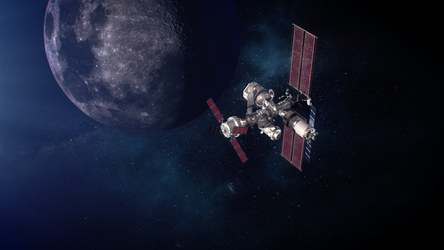Accept all cookies Accept only essential cookies See our Cookie Notice

About ESA
The European Space Agency (ESA) is Europe’s gateway to space. Its mission is to shape the development of Europe’s space capability and ensure that investment in space continues to deliver benefits to the citizens of Europe and the world.
Highlights
ESA - United space in Europe
This is ESA ESA facts Member States & Cooperating States Funding Director General Top management For Member State Delegations European vision European Space Policy ESA & EU Space Councils Responsibility & Sustainability Annual Report Calendar of meetings Corporate newsEstablishments & sites
ESA Headquarters ESA ESTEC ESA ESOC ESA ESRIN ESA EAC ESA ESAC Europe's Spaceport ESA ESEC ESA ECSAT Brussels Office Washington OfficeWorking with ESA
Business with ESA ESA Commercialisation Gateway Law at ESA Careers Cyber resilience at ESA IT at ESA Newsroom Partnerships Merchandising Licence Education Open Space Innovation Platform Integrity and Reporting Administrative Tribunal Health and SafetyMore about ESA
History ESA Historical Archives Exhibitions Publications Art & Culture ESA Merchandise Kids Diversity ESA Brand Centre ESA ChampionsSpace in Member States
Find out more about space activities in our 23 Member States, and understand how ESA works together with their national agencies, institutions and organisations.
Science & Exploration
Exploring our Solar System and unlocking the secrets of the Universe
Go to topicAstronauts
Missions
Juice Euclid Webb Solar Orbiter BepiColombo Gaia ExoMars Cheops Exoplanet missions More missionsActivities
International Space Station Orion service module Gateway Concordia Caves & Pangaea BenefitsLatest
Space Safety
Protecting life and infrastructure on Earth and in orbit
Go to topicAsteroids
Asteroids and Planetary Defence Asteroid danger explained Flyeye telescope: asteroid detection Hera mission: asteroid deflection Near-Earth Object Coordination CentreSpace junk
About space debris Space debris by the numbers Space Environment Report In space refuelling, refurbishing and removingSafety from space
Clean Space ecodesign Zero Debris Technologies Space for Earth Supporting Sustainable DevelopmentApplications
Using space to benefit citizens and meet future challenges on Earth
Go to topicObserving the Earth
Observing the Earth Future EO Copernicus Meteorology Space for our climate Satellite missionsCommercialisation
ESA Commercialisation Gateway Open Space Innovation Platform Business Incubation ESA Space SolutionsLatest
Enabling & Support
Making space accessible and developing the technologies for the future
Go to topicBuilding missions
Space Engineering and Technology Test centre Laboratories Concurrent Design Facility Preparing for the future Shaping the Future Discovery and Preparation Advanced Concepts TeamSpace transportation
Space Transportation Ariane Vega Space Rider Future space transportation Boost! Europe's Spaceport Launches from Europe's Spaceport from 2012Latest

Lunar eclipse over Lake Maggiore
Thank you for liking
You have already liked this page, you can only like it once!
The lunar eclipse that took place in the early hours of Monday 21 January kicks off a major year for our satellite. This year marks the 50th anniversary of the Apollo 11 mission, the first crewed landing on the Moon.
After more than four decades, the Moon is again in the spotlight of space agencies worldwide as a destination for both robotic missions and human explorers.
But first, the lunar eclipse.
The phenomenon known as a total lunar eclipse occurs when the Earth passes directly between the Moon and the Sun, hiding the light that illuminates the surface of our satellite.
As the Moon passes through the shadow of Earth it appears in orange and red hues. This is because a small portion of sunlight is refracted by the Earth's atmosphere and mostly red light reaches the Moon.
Many across Europe woke in the early hours to view this phenomenon and shared their images on social media. The images were stunning across the continent, but particularly over Lake Maggiore. This image of the eclipse at totality was taken at 06:23 CET by Alberto Negro.
In collaboration with international partners, ESA is preparing to go forward to the Moon on several missions to be developed over the next few years.
ESA has already delivered a key component to the NASA Orion spacecraft that will take humans back to the Moon. The European Service Module, the powerhouse engine that will propel the spacecraft, is currently undergoing mating and testing with the rest of the spacecraft in the United States.
Moving away from one-shot orbital missions, ESA is also teaming up with international partners on missions to explore the polar regions hand-in-hand with robots, in international cooperation and commercial participation.
Learn more about our closest neighbour in the Solar System in our interactive exploration guide or this new set of infographics.
-
CREDIT
Alberto Negro -
LICENCE
ESA Standard Licence

Lunar eclipse

Lunch with the Moon

Solar eclipse seen from Space Station

Peek-a-boo Moon















 Germany
Germany
 Austria
Austria
 Belgium
Belgium
 Denmark
Denmark
 Spain
Spain
 Estonia
Estonia
 Finland
Finland
 France
France
 Greece
Greece
 Hungary
Hungary
 Ireland
Ireland
 Italy
Italy
 Luxembourg
Luxembourg
 Norway
Norway
 The Netherlands
The Netherlands
 Poland
Poland
 Portugal
Portugal
 Czechia
Czechia
 Romania
Romania
 United Kingdom
United Kingdom
 Slovenia
Slovenia
 Sweden
Sweden
 Switzerland
Switzerland
























